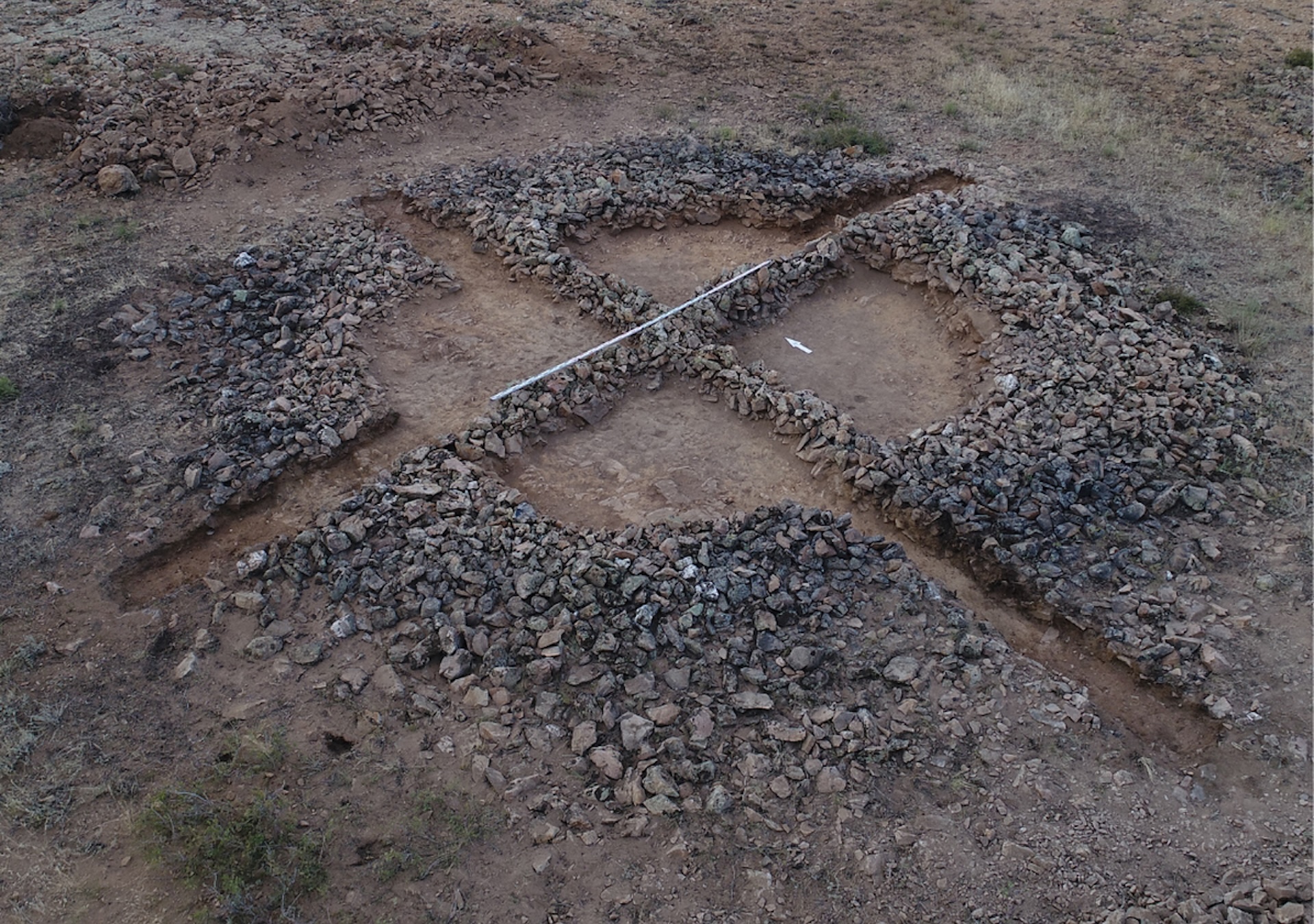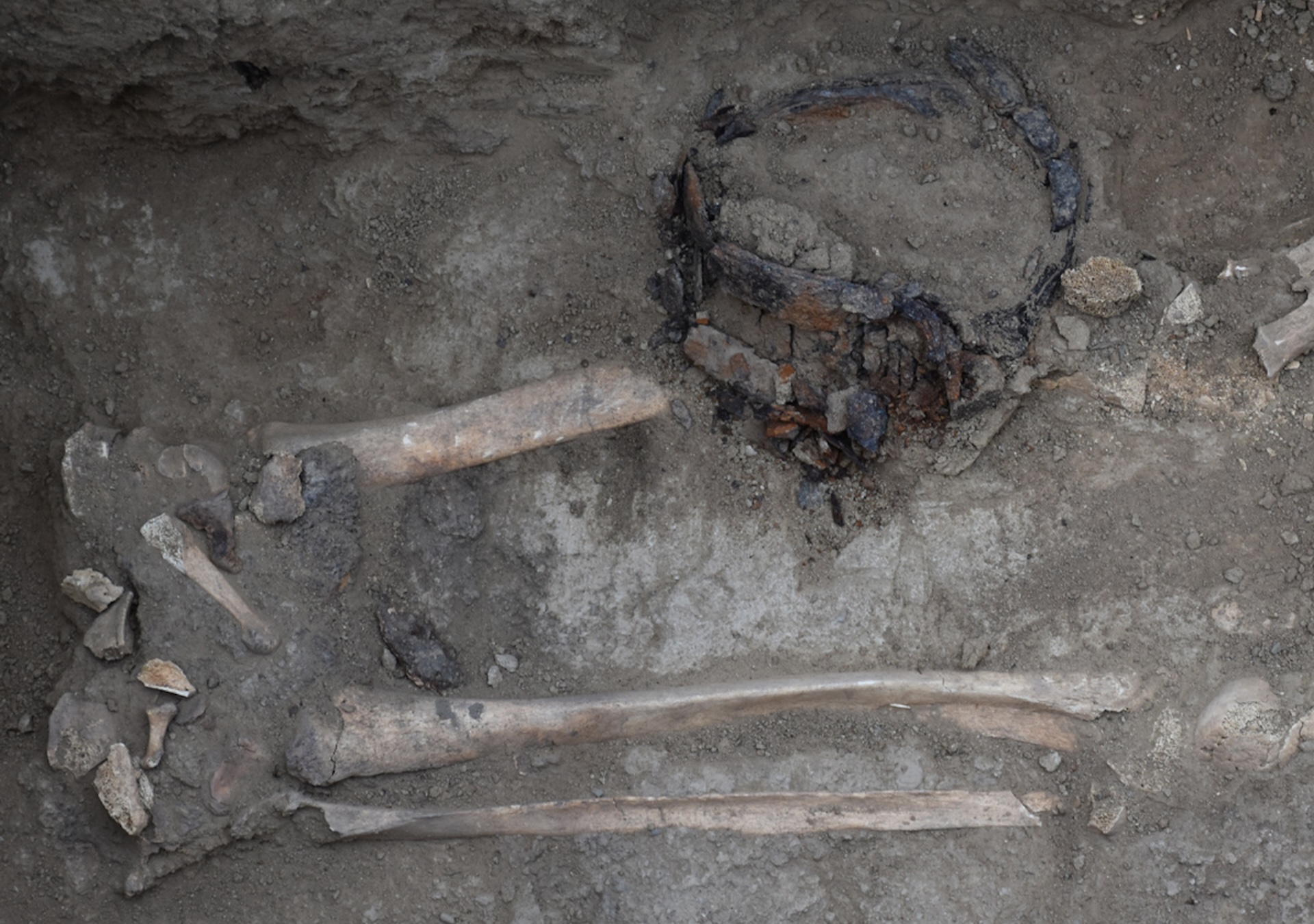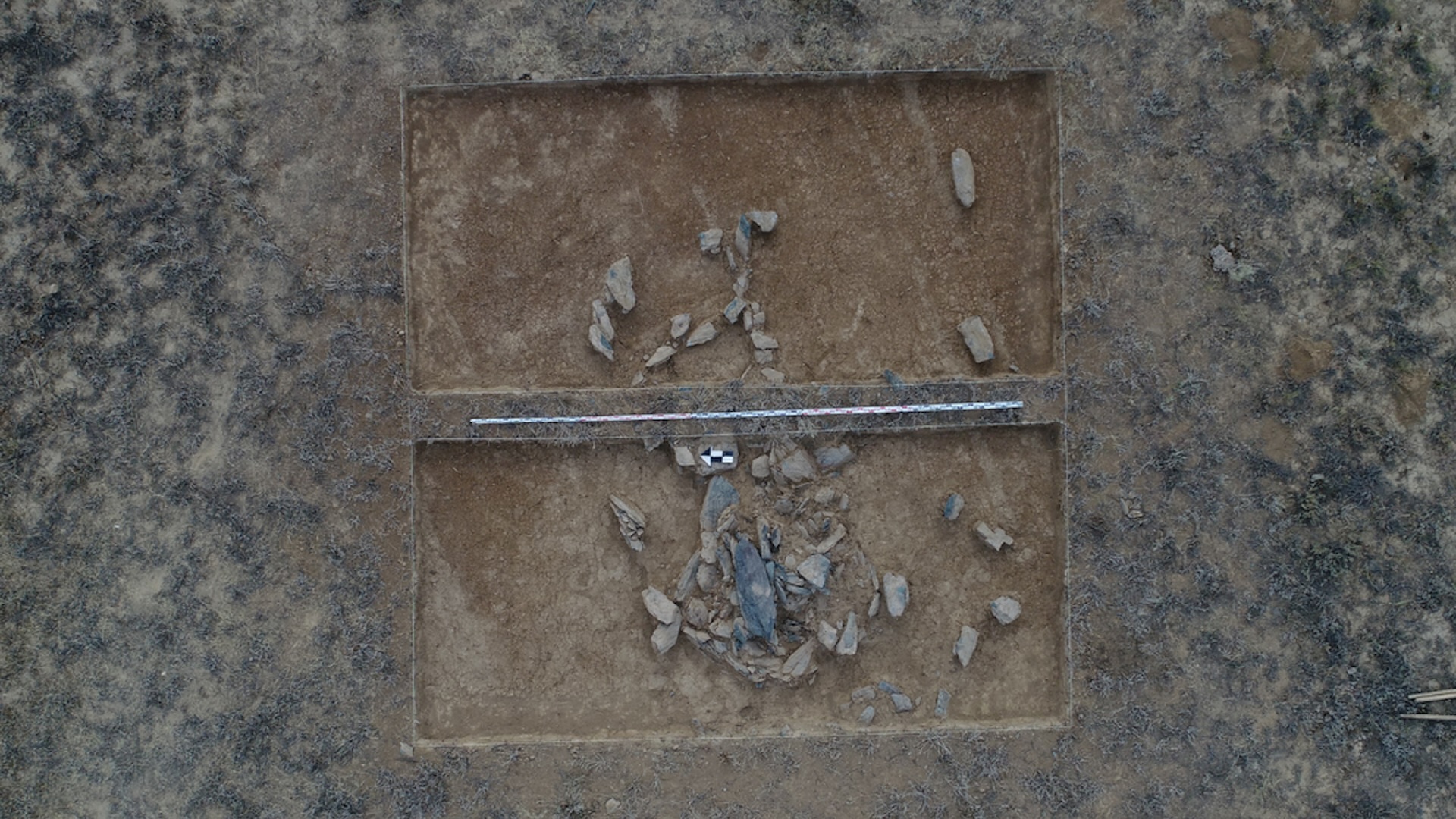Mysterious 'mustached' burial mounds in Kazakhstan date to the Middle Ages
Archaeologists in Kazakhstan have discovered 10 kurgans, or burial mounds, dating to the Middle Ages, and some have "mustaches."

Archaeologists in Kazakhstan have discovered 10 centuries-old burial mounds, known as kurgans, dating to the Middle Ages.
Found in the Ulytau region of central Kazakhstan, three of the kurgans are what archaeologists call "mustached kurgans" or "mustache kurgans" Zhanbolat Utubaev, an archaeologist at the Margulan Institute of Archaeology who led the team that discovered the kurgans, told Live Science in an email. These are burial mounds with ridges of stone going across them, Utubaev said.
"Mustached" kurgans from the Middle Ages (from approximately 600 to 1500) are common in Kazakhstan; more than 400 of them have been discovered in central Kazakhstan alone, Utubaev said. These mounds have diameters ranging from about 10 to 50 feet (3 to 15 meters) in length, he said.
The team excavated one kurgan that does not have a "mustache" and found the remains of a man who was buried with an arrowhead that is triangular, Utubaev said. It's unclear who he was or how he died, but later research may shed light on his cause of death.
Related: 2,000-year-old gold jewelry from mysterious culture discovered in Kazakhstan
The exact date of the newly found kurgans is unclear, but they appear to date to the Middle Ages, according to a statement from the Margulan Institute of Archaeology. During that time, some people in Kazakhstan lived a nomadic lifestyle, while others were more settled.


For instance, many settled people lived in the city of Taraz, which flourished in southeastern Kazakhstan and was a major stop along the Silk Road between China and Europe. But other people in Kazakhstan lived a more nomadic lifestyle. The most famous of these groups was the Mongols, who conquered the region during the 13th century. The newfound kurgans may predate the Mongol conquest, but they appear to have belonged to a nomadic group.
Get the world’s most fascinating discoveries delivered straight to your inbox.
The team's research is ongoing, and more excavations of the kurgans may take place in the future.

Owen Jarus is a regular contributor to Live Science who writes about archaeology and humans' past. He has also written for The Independent (UK), The Canadian Press (CP) and The Associated Press (AP), among others. Owen has a bachelor of arts degree from the University of Toronto and a journalism degree from Ryerson University.
